Have you ever wondered how your email addresses can be a golden asset for your business? In this article, I will reveal the secrets of effectively collecting and using a database of email addresses, based on my experience, which will help you not only increase sales, but also create strong relationships with clients. Learn how to turn simple addresses into powerful marketing tools!

Glossary
- 📧 Email - An email used for communication and marketing.
- 🗃️ Email database - List of collected email addresses for sending marketing materials.
- 📝 Subscription form - A web form that allows users to enter their email addresses to receive newsletters.
- 🎁 Lead Magnet - A valuable resource or offer that encourages users to sign up for your newsletter.
- 🖱️ Pop-up forms - Windows that appear on the site inviting users to subscribe to the newsletter.
- ✍️ Guest articles - Articles posted on third-party resources with a link to your subscription form.
- 🎥 Video Links - Integrate subscription links into video content to encourage subscriptions.
- 🛒 Subscribe at checkout - Offer to subscribe to the newsletter at the time of purchase.
- 💬 Chat contacts - Collect email addresses through online chats and support.
- 📱 Social Media Posts - Using social platforms to promote your signup form.
- 🔄 Maintain the subscriber base - Regular updating and cleaning of the database to keep it up to date.
- ⏳ Reactivate the "sleeping" base - Techniques aimed at awakening inactive subscribers.
- ✅ Check the validity of addresses - The process of verifying email addresses for their validity.
- 📜 Ask to confirm your consent to subscribe - Written confirmation from subscribers of their intention to receive newsletters.
- 📬 Old database - Inappropriate or inactive addresses in the database that require additional attention and action to engage subscribers.
Effectively creating and using a database of email addresses
Collecting email addresses is a seemingly simple task, but it is fraught with many nuances that I learned from my own experience. When I first started my email marketing program, especially for small and medium-sized businesses, emotions ranged from excitement to complete disappointment. I especially remember one incident, which became a real lesson for me for the future.
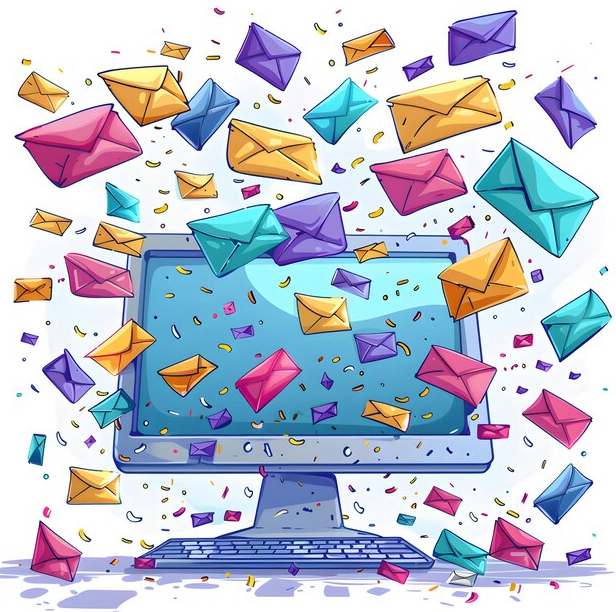
Since the idea of collecting and using email addresses came to me in my head, I took many steps to do it right. First, I created a subscription form on the site so that everyone could easily leave their addresses. However, something was clearly missing. The very essence disappeared somewhere: people left their addresses, but then did not open the letters. This got me thinking: what was I doing wrong?
The solution came to me when I met with one of the subscribers who refused the newsletter. He said bluntly: “I subscribe to many mailing lists, but only occasionally do I find something useful there.” It was a hit on the nose and I realized I needed to change my approach. Understanding that email addresses are not just numbers on a table, but real people with specific interests was a turning point for me.
I started collecting information about the preferences of my subscribers - what they are interested in, what topic is most relevant to them. And finally, I realized how important this is: each letter became individual. I emphasized that the content was valuable and interesting. As a result, subscribers began to open emails, and the CTR (click-through rate) only grew.
Here are a few strategies I used to build my email database:
- 📩 Created attractive subscription forms on the website and social networks.
- 🎁 Offered valuable options, such as free webinars and useful guides in exchange for addresses.
- 📝 Maintained regular interaction - created email chains that attracted attention.
The important part was compliance with the legal framework. I made sure that all addresses were collected with the consent of their owners and this increased the level of trust in my brand.
At this stage, it became obvious that the ease of opening emails and the engagement of subscribers depends on understanding their needs. And don’t forget about regularity - this will ensure you have a long-term relationship with your audience. The process of collecting and interacting with subscribers became for me not some kind of formal step, but a sincere dialogue.
As more people opened the email, they felt connected, which was a truly happy ending to my email journey! So, if you don't have an email database yet, here are the steps to help you connect with your customers:
A quick action plan for building an email database:
| Step | Description |
|---|---|
| 1. Determine your target audience | Find out who your potential subscribers are. |
| 2. Create a subscription form | Make sure that it is simple and attractive. |
| 3. Offer valuable options | Give them reasons subscribe (for example, guides). |
| 4. Stay Legal | Obtain consent for data processing. |
| 5. Interact constantly | Write valuable emails and keep it interesting. |
By following these recommendations, you will not only build your base, but also become a true partner for your subscribers!
How to collect and use a database of email addresses
Website subscription form
Creating an effective website subscription form turned out to be one of the most significant steps in marketing for me. One day, while analyzing the conversions of my blog, I noticed that most visitors left the page without leaving their email. This gave me an idea about how to collect my first addresses. For this I chose a simple yet attractive design. Some forms were too cumbersome, required unnecessary information and, as a result, turned off visitors. I decided to use only the necessary fields: email and name. To avoid legal problems, I added a checkbox for consent to the processing of personal data. As it turned out, clarity played an important role: I added a description of what to expect from the newsletter. And for good reason! Subscription conversion has increased significantly.

Lead magnet
Early in my success with email marketing, I realized that form design alone was not enough. The solution came when I offered my readers a free e-book in exchange for an email. It turned out to be a real “lead magnet”! One day, after receiving emails from potential subscribers thanking me for understanding their needs, I realized how important it was to create useful content. This is how I collected my first 500 subscribers in less than a month!
Pop-up forms
Pop-up windows have an interesting story. At first I was against using pop-up forms, thinking they might irritate users. But as soon as I implemented a pop-up that appeared 15 seconds after entering the site, the results surprised me. Friends began sharing this feature and reporting an increase in subscribers. It turned out that a short, enticing message can not only collect email addresses, but also increase overall interest in the content.
Guest articles
Working with partner blogs has yielded unexpected results. When publishing interesting articles on third-party sites, I always included a link to my subscription form. Once, after publishing on a popular site, my email list grew by 200 new addresses in just a week! Readers interested in continuing the topic under discussion willingly subscribed. This opened up new horizons and opportunities for advancement for me.
Video Links
Creating video content has greatly transformed my strategy. I started posting a subscription link under my videos, doing it unobtrusively. So much so that subscribers often wrote in the comments that they were interested in this resource and wanted to keep abreast of new products. In the last video, I also touched on the issues of email newsletters, which led to an increase in the base and even greater audience involvement.
Subscribe at checkout
When including an email field on my order forms, I was extremely careful to always notify customers when that they subscribe to the mailing list, receiving notifications about special offers and promotions. It's amazing how simply adding two sentences increased your subscription rate by 30%!
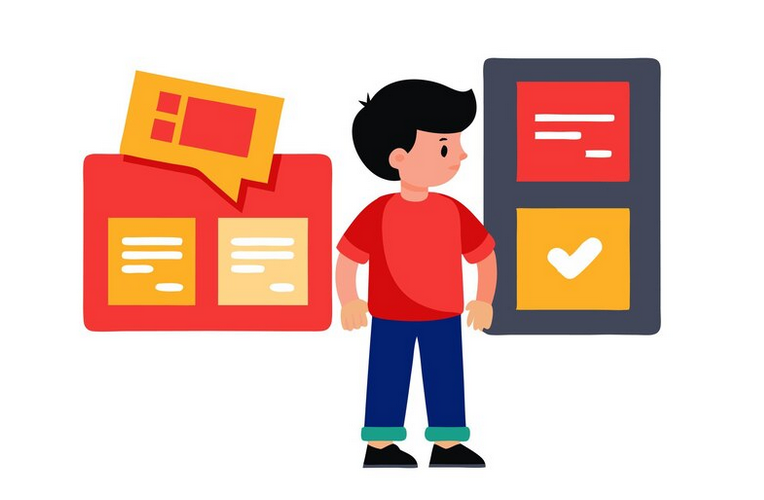
Chat contacts
One day, while answering a question from a potential client in a chat, an idea came to me. “I can send an answer to your email,” I suggested. This aroused interest and allowed us to collect several more addresses. And, of course, the letter included an offer to subscribe to the newsletter. This showed that customers are willing to leave their addresses if they understand that there is something valuable waiting for them.
Social Media Posts
Creating posts that talked about mailing lists opened up a new path. I once heard the phrase: “Tell me what you offer, and they will come to you.” It became obvious that periodically posting about the content of the newsletter can attract the attention of new subscribers. Calls to action inviting people to subscribe have become an integral part of my content.
Mini-table: How to successfully collect a database of email addresses
| Step | Action | Goal |
|---|---|---|
| 1 | Create a simple subscription form | Increase in conversion |
| 2 | Apply lead magnet | Increase interest |
| 3 | Introduce pop-up forms | Attract attention |
| 4 | Post guest articles | Expand coverage |
| 5 | Add links in video | Attracting new subscribers |
| 6 | Include subscription in checkout | Increase customer base |
| 7 | Request email in chats | Establishing connections |
| 8 | Post on social networks | Increased interest and engagement |
How to keep your subscriber base active
When it comes to keeping your subscriber base up to date, an example from my practice comes to mind. A few months ago, I discovered that my seemingly growing email list actually included many dead contacts. Instead of getting the expected traction, my emails fell on deaf ears and my email open rate was at a level that was shocking. It became clear: cleaning was necessary.

I decided to hold a campaign to reactivate inactive subscribers. To do this, I developed a series of special letters with offers that would spur interest in the content. "Why have you lost contact with us?" – I asked the question in these letters, combining it with unique offers and promotions. 🌟
The results did not reflect the needs of the audience well. "You don't read our letters, do you?" – I asked a question to one of the subscribers. This made me think that some addresses should just be deleted. Ultimately, those who did not respond to the letters were excluded from the database. I noticed that after these manipulations, the email open rate began to increase by 30%!
What I did:
- Developed unique content to reactivate subscribers.
- Sent special offers to those who have not opened emails for more than three months.
- Removed from the database those who did not show interest, which reduced the cost of mailing.
Then I realized that it is not the number of subscribers that matters, but their engagement.
Steps to clean up your database:
| Step | Action |
|---|---|
| 1 | Audit your database to identify inactive subscribers. |
| 2 | Create a unique offer for reactivation. |
| 3 | Remove uninterested subscribers from your database. |
Regular address validation
Problems with invalid addresses can become a real disaster. In my practice, this happened when there were too many invalid addresses in the list. Once, after sending an important proposal, I received more than 50% undeliverable emails. The statistics turned out to be disappointing - this was exactly the case when quantity exceeded quality.
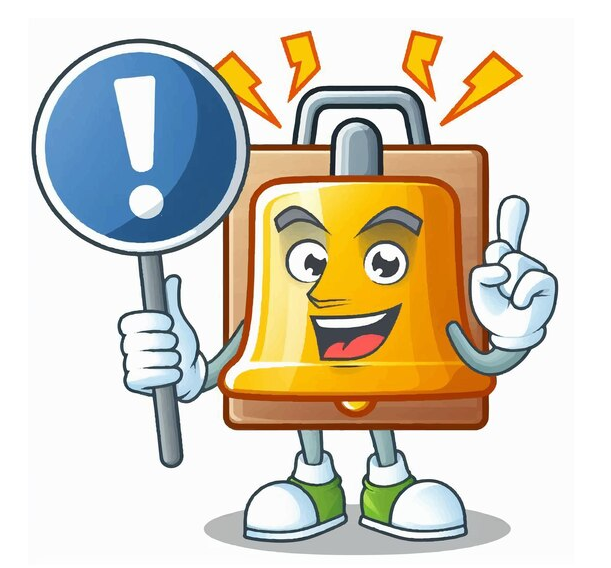
In response to this situation, I implemented periodic verification of addresses using specialized services. I started using Mailvalidator and Smart Validator which made things very easy. These tools identified erroneous or unreachable addresses and allowed you to avoid spam. Thus, by sending emails only to relevant addresses, I noticed a significant improvement in open rates by 15% after the first test.
My steps:
- Used services to check the validity of addresses.
- Removed invalid addresses identified during validation.
- Periodically checked the relevance of the entire database.
Address validation process:
| Step | Action |
|---|---|
| 1 | Run address validation using a specialized service. |
| 2 | Remove invalid and inaccessible email addresses. |
| 3 | Repeat the process periodically to maintain the base current state. |
Subscription consent confirmation
I remember early in my career not considering the importance of the double opt-in process. Back then, my mailing lists often included many users who were either never interested in my information or had forgotten that they had signed up. This “accounting” greatly alarmed me.
.gif)
The solution came when I came across the practice of double opt-in. The approach was simple but effective: immediately after subscribing, the user was sent a confirmation email asking them to activate their subscription. This made it possible to exclude unnecessary addresses immediately, even before the start of the mailing. The results amazed me - open rates increased, and the number of spam complaints decreased! 😊
What was done:
- Implemented double confirmation of subscription.
- I made sure that at the first stage of subscription, users receive information about the benefits.
- Removed uninterested subscribers after the first undelivered email.
Double opt-in implementation process:
| Step | Action |
|---|---|
| 1 | Implement a double confirmation process for new subscribers. |
| 2 | Send profitable offers in the first stage. |
| 3 | Track subscriber activity and remove uninterested ones. |
Having learned the processes of working with email databases and being responsible for their content, I learned about the many levers that can play a huge role in the success of marketing campaigns. Each of these steps had a significant impact on the quality and effectiveness of the mailings.
How to regain interest in the old address database
Already More than once in my practice I have encountered a situation where old email addresses in the mailing list were ignored. Think about it: how does it feel when your old database is lying idle and your marketing activity is suffering? In my experience, such expectations only make the situation worse. Every missed chance is not just a number. These are, first of all, people who could receive valuable information, and you - potential profit.

When I started working with such old databases, I had a question: how Is it effective to return interest to disappeared subscribers? It was difficult at first, but one story showed how it can be done.
Imagine that several years ago I had a group of clients in my database who subscribed to my mailing lists, but over time they simply forgot about us. They didn’t open the emails, and many didn’t even remember to subscribe. While sometimes the most valuable proposals suffered from this. And so, after much thought, I came to the idea that we need to launch a “reanimation” of the old base. Given the purchase decision cycle, which can vary from a week to a year, it was worth considering that some contacts may still express interest.
Strategy for Revitalizing the Old Base
Here are the steps I took that I hope you find useful:
- 🧹 Mailing List Cleanup: First I removed invalid and non-existent addresses. This task often takes a long time, but it is necessary.
- ✉️ Welcome Letter: I sent a series of welcome letters to all remaining addresses. In each message he explained where he got the address from, what was happening and how the newsletter would be useful.
- ✅ Confirmation of consent: It was important to offer subscribers to confirm their consent to receive emails or unsubscribe. From my own experience, this allows you to smooth out possible negative aspects.
- 📊 Dividing into groups: I divided the remaining subscribers by date of last interaction and their activity. I started with more recent addresses to minimize reputational risks.
- 🔍 Analysis of results: After each series of letters, I carefully tracked the open rate. The goal was at least 20%. This gave an understanding of which groups were working.
Despite the initial difficulties, the results began to please. Once interest in the newsletters returned to some subscribers, I felt a powerful surge of optimism. Webinars, offers and useful materials began to help improve communication.
The whole process turned out to be not only important, but also interesting, because I actually brought people back into my life.
And, of course, this experience showed that even an old base can be alive if you approach it wisely and patiently. Keeping your customer experience relevant and interesting takes work, but trust me, it's worth it. And to get the most out of your base, follow similar steps.
To sum it up
Resuscitation of an old email address database is like a second life that can give new opportunities. The main thing is not to be afraid to use different methods and be open to change. Experiment and don’t forget to analyze the results.
Steps to revive the old base
| Step | Action/Description |
|---|---|
| Cleanup | Remove invalid addresses |
| Connect | Send a welcome email |
| Confirmation | Invite subscribers to confirm their consent |
| Segmentation | Divide the list by activity |
| Analysis | Track message open rates |
By following these steps, you can bring back interest in your old base and stop seeing them solely as “past”!

Often asked questions on the topic: Creating a database of email addresses
1. What is the importance of creating a database of email addresses?
An email database allows you to communicate directly with your audience, increase sales and strengthen customer relationships.
2. What methods are there to collect email addresses?
There are various methods such as website subscription forms, lead magnets, pop-up forms, etc.
3. What is a lead magnet?
A lead magnet is valuable content or an offer that encourages users to leave their email address.
4. How to keep your email database up to date?
Regularly update information, check the reality of addresses and ask subscribers to confirm their consent to receive letters.
5. How can you revive a dormant subscriber base?
Send special offers and reminders to recapture the attention of subscribers who haven't opened your emails in a while.
6. How to use pop-up forms effectively?
Use them on high-traffic pages to grab users' attention and offer subscriptions to interesting content.
7. Is it possible to collect email addresses through social networks?
Yes, create posts that encourage people to subscribe and share links to the subscription form.
8. How to use contacts from chats to collect email addresses?
When communicating with clients in chats, ask questions about their desire to receive news by email and offer a subscription.
9. What to do if the database is old and subscribers don’t read emails well?
Review the content of the newsletter, offer updates on topics that interest subscribers and conduct a campaign to revive interest.
10. How to check the validity of email addresses in the database?
Use specialized tools to verify email addresses to remove non-existent or incorrect ones.
Thank you for becoming wiser! 🌟
Now that you are armed with the knowledge of how to effectively collect and use a database of email addresses, I hope that each of your campaigns will be more successful! While working on projects, I saw how the right approach to collecting addresses not only increases sales, but also creates strong connections with clients. Having developed and tested various strategies, including landing pages and mobile forms , I'm convinced that creativity and consistency are your best options Friends. Let me know in the comments how you apply these tips!
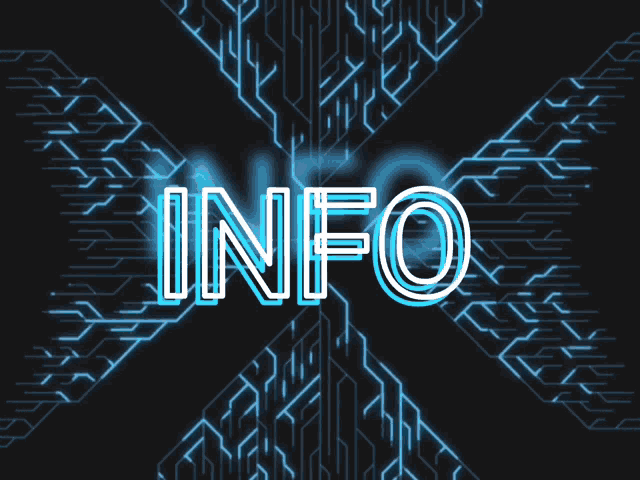
- Glossary
- Effectively creating and using a database of email addresses
- How to collect and use a database of email addresses
- How to keep your subscriber base active
- How to regain interest in the old address database
- Often asked questions on the topic: Creating a database of email addresses
- Thank you for becoming wiser!
Article Target
Inform readers about methods of creating and using email databases.
Target audience
Small and medium enterprises, marketers, business owners.
Hashtags
Save a link to this article
Yuri Seleznev
Copywriter ElbuzI unravel the secrets of successful online store automation, plunging into the world of effective solutions and secrets of online business - welcome to my virtual labyrinth, where every line is the key to automated success!
Discussion of the topic – Email address database
Informing about methods of collecting email addresses and their effective use for marketing.
Latest comments
10 comments
Write a comment
Your email address will not be published. Required fields are checked *















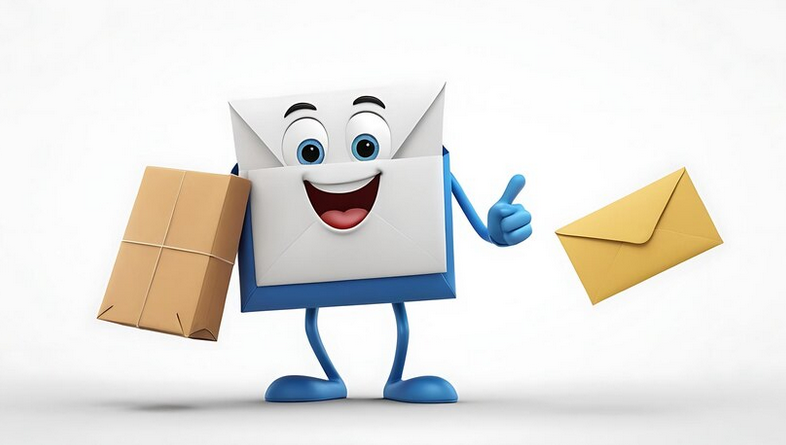




.png)




Александр
I agree that building an email database is the key to successful marketing! 💡 One effective method is to offer unique resources in exchange for email, like e-books or webinars. What type of content do you prefer to collect?
Мариа
Great idea, Alexander! I use surveys and quizzes to get people interested and collect their email addresses. 😍 This is not only fun, but also allows us to identify the interests of our clients. Has anyone tried holding competitions?
Луи
I agree, Maria! Contests are a great way to have fun and collect addresses! 🎉 But it’s important not to forget about segmentation. How do you segment your base after collection? I do this based on interests and activity.
Юрий Селезнёв
Segmentation is really important, Louis! I also recommend using automation to manage your mailings. This allows you to send more relevant content to each segment. What programs do you use?
Грэнь
All your ideas sound pretty funny, but there are more important things in the world. Thoughts about email marketing are as ephemeral as trends and memes. Maybe we should just bury these addresses in the ground?
Ева
A bummer, maybe, but there's no denying that email marketing works. 📧 I also use pop-ups on the site to collect addresses. The main thing is that this does not irritate users and does not distract them from the content.
Оливье
I agree with Eva! Pop-ups can be effective when set up correctly. But I also add a subscription link at the end of each article. What about the timing of sending emails? Are there any secrets?
Павел
Shipping time is very important, Olivier! I've noticed that newsletters on Tuesdays and Thursdays get more responses. 📅 How do you feel about the frequency of mailings? Is there a balance between informing and annoying?
Наталья
Exactly, Pavel! Balance is the key. You shouldn't spam, but regular mailings set customer expectations. In addition, it is important to test letters. A/B tests help you understand what works best! 💪
Юрий Селезнёв
Natalia, great point about A/B testing! This really helps optimize your emails and increase open rates. Do you have examples of successful tests?